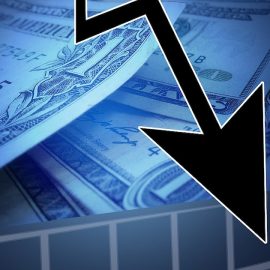

This article is an excerpt from the Shortform book guide to "Great by Choice" by Jim Collins and Morten T. Hansen. Shortform has the world's best summaries and analyses of books you should be reading.
Like this article? Sign up for a free trial here .
What makes a great leader? What qualities do successful leaders possess? Can leadership ability be cultivated or is it more of an inherent personality trait?
Leadership is a misty, intangible concept. To the uninitiated eye, high-profile leadership is difficult to conceive of which is why there are so many myths on the matter. But it doesn’t have to be confusing.
Here are some of the most entrenched leadership myths debunked.
Top 5 Leadership Myths
The research discussed in Great by Choice by Morten T. Hansen and James C. Collins, which covered a dozen of companies from their founding up until 2002, debunks a lot of entrenched leadership myths:
Myth 1: Successful Leaders Are Big, Bold, Visionary Risk Takers
“10Xer”s (pronounced “ten-EX-ers”) are people who built companies that beat the industry index by at least 10 times. The research suggests that, instead of being big, bold, visionary risk-takers, 10Xers rely more on three core behaviors:
Behavior #1. Fanatic discipline—rather than strict adherence to rules and obedience to authority, the 10Xers’ brand of discipline is more about sticking consistently to their values, long-term goals, standards, and methods, no matter what.
One of the ways they exercise fanatic discipline is by going on the 20 Mile March. To 20 Mile March means to hit specified targets year after year with a long-term view in mind. The name comes from the concept of reaching a destination by hitting 20 miles a day, no more, no less, no matter what. The authors cite two South Pole expeditions in 1911 as an example: Team 1, led by Roald Amundsen, traveled no more than 20 miles a day, even when conditions were good. With their consistent pace, they finished the expedition right on schedule. Team 2, led by Robert Falcon Scott, pushed themselves to the brink of exhaustion on some days while sitting out all the gale-force winds they encountered. Team 2 reached the Pole 34 days later than Team 1 and died on their return journey.
A good 20 Mile March:
- Specifies both upper and lower bounds. The minimum target (lower bound) should be realistic enough to be achieved even during hard times, while the maximum (upper bound) keeps you from overextending yourself and becoming too weak in the face of challenges. Example: Amundsen’s team targeted 15 to 20 miles a day, even on days when they could do 25.
- Is customized to the enterprise. Performance makers should make sense for your company and your industry. These markers can be non-financial. Examples: For a church, it can be congregation size; for a school, it can be the students’ academic performance.
- Is achievable through your own actions, not reliant on outside factors. Don’t sit around waiting for conditions to change in your favor. Take action, and control what you can control.
- Falls within a reasonable time frame. A too-short 20 Mile March exposes you to greater risk, while a too-long one won’t make enough of an impact.
- Is consistent. 10X companies rarely missed their target. When they did, they quickly self-corrected.
Behavior #2. Empirical creativity—10Xers aren’t more daring than their comparison leaders, but they act decisively based on extensive observation and experimentation.
- Example: Amundsen read through notes and journals from previous expeditions to help him decide on a stable base camp location—a place no one else had considered before.
Behavior #3. Productive paranoia—10Xers consider every kind of nightmare scenario so that they can remain vigilant and prepare for the worst.
- Example: Amundsen thought of disastrous scenarios and left nothing to chance. He stored three tons of supplies for his team and clearly marked the way to supply depots in case they went off course.
All three core behaviors are driven by Level 5 ambition, which is an incredible ambition and strength of will geared towards the organization. 10Xers aren’t on the quest for personal greatness; instead, they want to build a great company, make a difference in the world, and leave a legacy behind.
Myth 2: Successful Leaders Are Innovators
The research revealed that some 10X companies didn’t innovate as much as their competitors. They did, however, innovate just enough and approached innovation in a way that increased their chances for success: They fired bullets before cannonballs. Firing “bullets” means testing and experimenting to see what they hit. Then, once they’d gathered convincing data, they concentrated their firepower into “cannonballs” calibrated for success, aiming in the direction that bullets had shown to have the greatest potential. They never launched uncalibrated cannonballs.
A bullet can come in the form of a new product, service, technology, process, or acquisition, as long as it doesn’t cost much, has minimal consequences, and doesn’t disrupt the enterprise.
- Example: When Amgen wanted to find the best application for recombinant-DNA technology, they first fired bullets by experimenting with a dozen different uses of the tech, from a vaccine to a chicken growth hormone. Among the bullets they fired, Amgen found erythropoietin (EPO) to show the most promise. Once Amgen gathered enough data, they fired a cannonball and rolled out EPO. It went on to become the first billion-dollar bioengineered product in history.
Myth 3: Successful Leaders Have to Move Fast, All the Time
Instead of focusing on speed, 10X leaders focus more on timing. They don’t respond to threats right away; they respond to threats the right way. They constantly ask, “What if?” and mitigate nightmare scenarios by:
1. Setting up buffers—10X cases had huge cash reserves to see them through the inevitable disruptive event.
2. Limiting and managing risk—they took fewer risks than the comparison companies. When it came to time-based risks, they didn’t panic and instead assessed the situation and made decisive moves based on the time they had.
3. Taking a macro and micro view of the landscape—they didn’t just pay attention to the work at hand but also kept an eye on their surroundings for oncoming threats. They addressed perceived threats accordingly.
- Example: In 1979, Intel faced a growing threat. Motorola was racking up design win after design win and, if they continued on this path, would become the industry standard, rendering Intel obsolete. Intel quickly formed a special team to analyze what Motorola was doing right and what Intel was doing wrong, then came up with a comprehensive plan called Operation CRUSH. Within the week, they started executing the plan. Intel then racked up 2,000 design wins in a year, crushing the Motorola threat.
Myth 4: Successful Companies Change Drastically to Keep Up With the Times
Based on the data, 10X companies changed less than their comparisons, recognizing that the only thing they had control over was themselves. They used this control to stay steadfast amid the chaos around them, employing fanatic discipline, empirical creativity, and productive paranoia, all while sticking to their SMaC (Specific, Methodical, and Consistent) recipe.
A SMaC recipe is a set of operating practices that strikes the balance between being durable and specific. It clearly and concisely outlines what a company should and shouldn’t do. Much like the United States Constitution, it has an enduring framework that is specific enough not to be ambiguous, while being flexible enough to allow for amendments when the need arises.
But with 10X cases, amendments were few and far between. They only changed their recipes 10 to 20 percent of the time over more than 20 years on average, exercising empirical creativity and productive paranoia when they did. They had the discipline to change only what needed to be changed, keeping the rest of the recipe intact.
Meanwhile, comparison companies changed their recipes 55 to 70 percent of the time over the same period. This suggests that changing too much too fast doesn’t give a company a chance to build momentum, rendering it unable to achieve sustained success.
Before changing a SMaC recipe, it pays to determine if it’s not working because you’re not consistent enough to stick to it or because circumstances truly warrant a change.
- Example: Faced with airline deregulation that would increase competition, Southwest Airlines’ then-CEO Howard Putnam determined that Southwest would not be greatly affected and that their best course of action was to keep doing what they were doing. He then created a SMaC recipe for Southwest that contained the practices that worked for them. It clearly outlined what they were supposed to do—“Use 737s as primary aircraft” (which would only entail one set of parts, manuals, and procedures)—and not do, such as “Don’t offer food” and “Don’t carry air freight or mail” (services that would bog down airplane turnaround time). Southwest’s simple and concise SMaC recipe based on empirical data saw the company through numerous disruptions in the airline industry and remained 80 percent intact through 25 years.
Myth 5: Successful Leaders Are Just Luckier Than Others
Some people see luck as the only explanation for tremendous success; others see luck as a non-factor. The research found that neither extreme holds true. 10X companies and their comparisons had a fairly even playing field when it came to luck, having a comparable number of good-luck and bad-luck events.
What set 10X cases apart wasn’t the amount of luck they had, but what they did with what they were dealt. They showed that luck wasn’t a crucial factor for success, but return on luck was.
There are four possible scenarios when it comes to luck and return on luck:
1. Great return on good luck—10X companies didn’t coast on good luck and instead used good-luck events to their advantage. One of the most important types of good luck for an enterprise is finding the right people for your enterprise.
- Example: A Taiwanese scientist named Fu-Kuen Lin responded to Amgen’s job posting in the classifieds. Lin turned out to be an incredibly hard worker, obsessively working on the EPO gene for years. His hard work paid off, leading to the first billion-dollar bioengineered product. Amgen’s good luck in finding Lin led to massive success for the company.
2. Poor return on good luck—comparison companies had their fair share of good luck but failed to execute and make the most of it.
- Example: Intel’s comparison company, AMD, had a string of good luck: They won a court case, developed a great product, and had the market’s support. They had more good luck when Intel ran into some problems with defective chips. AMD was in the perfect position to overtake Intel, but they stumbled and were delayed for months. Then, they experienced another stroke of good luck when they acquired NexGen, a company with tech to rival Intel’s. Again, AMD failed to deliver, lagging behind in production. AMD’s series of good-luck events were all overturned by poor execution.
3. Great return on bad luck—10X companies used bad-luck events to display their full might. They exhibited resilience by using their bad luck to produce great outcomes.
- Example: In 1988, California voters passed Proposition 103, which lowered auto-insurance prices by 20 percent. It was consumers’ punitive response to car-insurance companies that made it difficult for customers to make claims after auto accidents. Progressive Insurance would have been greatly affected by this proposition, as 25 percent of their market was in California, but instead of panicking, they heard the consumers’ message loud and clear. Progressive responded by greatly improving their claims service. As a result, they made their way up from #13 in the market to #4 by the end of the era of analysis.
4. Poor return on bad luck—perhaps the only true form of luck. While one big good-luck event can’t lead to sustained greatness, a single bad-luck event or a series of events can kill a company. This is why it’s important to behave like a 10Xer and create buffers for bad-luck events.
- Example: Both Southwest and PSA faced a number of bad-luck events: oil shock, labor strikes, a recession. Southwest was prepared to weather the long season of bad luck. On the other hand, PSA kept making self-destructive moves like raising prices and increasing debt. Their poor return on bad luck meant that they were perpetually behind Southwest.
Behaving like a 10Xer who exercises fanatic discipline, empirical creativity, and productive paranoia can give you the best outcome, no matter what kind of luck you have. With good luck, these core behaviors can propel you to greatness; with bad luck, these core behaviors can help you survive or even push you to thrive. Luck isn’t the master of your fate—you are, and you can make the decision to become something great.

———End of Preview———
Like what you just read? Read the rest of the world's best book summary and analysis of Jim Collins and Morten T. Hansen's "Great by Choice" at Shortform .
Here's what you'll find in our full Great by Choice summary :
- How you can make the choice to be great, no luck needed
- Why certain assumptions about great leaders are actually myths
- How some companies are 10X more successful than their competitors






